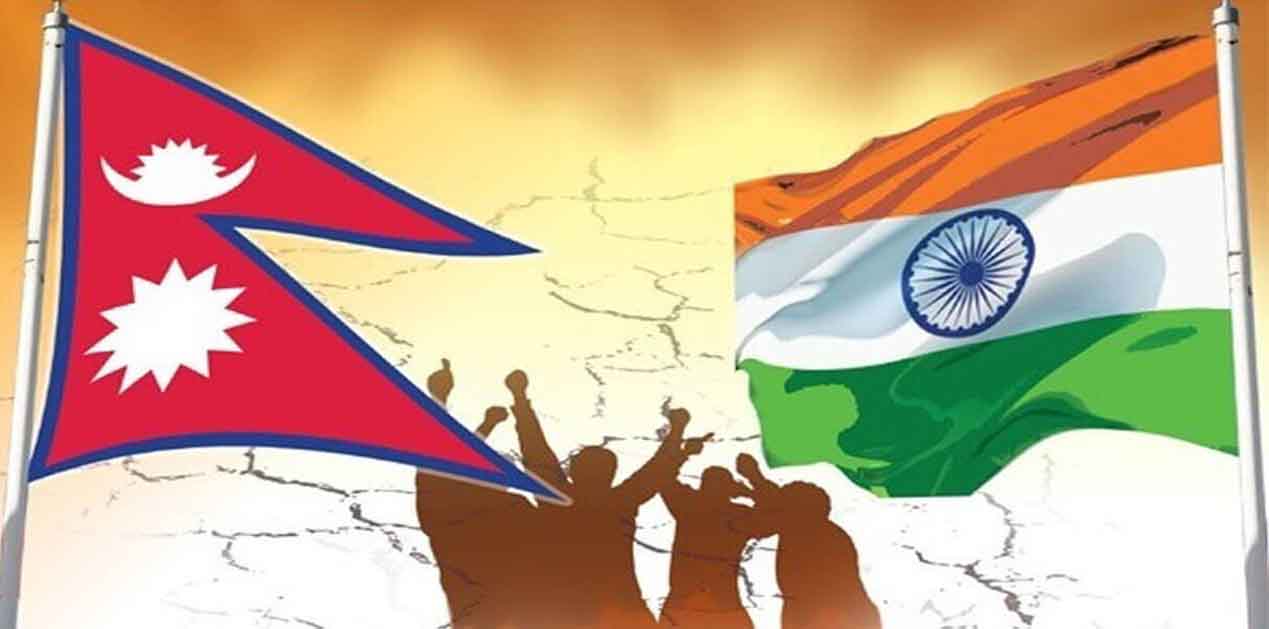The landmark nation-wide elections in Nepal under the new Constitution, held in end-2017, ushered in a new era of democratic governance in the country. In these elections, the people’s verdict went overwhelmingly in favour of the Party of Nepal-Unified Marxist–Leninist or CPN-UML led by Prime Minister K P Oli, in alliance with CPN (Maoists Centre). The Nepali Congress (NC) led alliance fell way behind, not only at the Federal level but also in six of the seven provinces. Following this, the Left Alliance leader K P Oli was sworn in as the Prime Minister on February 15, 2018. This is his second stint in the office, the earlier one being from October 12, 2015 to August 4, 2016.
The present government, commanding a massive majority, has been in office for just over nine months. The performance of the government, particularly in the context of India-Nepal relations, was discussed recently at a well-attended seminar of experts at the Vivekananda International Foundation, New Delhi. Discussants recalled the sharp deterioration in bilateral relations during the earlier stint of PM Oli when India was perceived as having got engulfed into the Madhesi issue and the consequent ‘blockade’ of the border in 2015. In fact, anti-India rhetoric was the main platform of Oli’s electoral campaign.
Discussants largely saw this period as an aberration in the context of the deep and abiding ties between the two countries and the people. It was observed that India-Nepal relations go beyond the political and strategic compulsions. It incorporates different aspects like people-to-people associations, open borders, cross-border mobility, economic relations, common historical past and cultural linkages. These aspects have always played a very significant role in the bringing the two countries together. Speakers also highlighted India’s unstinted support to the democratic movement in Nepal.
Regrettably, however, it was pointed out that certain groups in authority in Nepal and the media in general adopted highly critical stance during the period, accusing India of ‘excessive role in the domestic politics’ of Nepal. These led to a perception that the special relationship between the two countries had turned into a complex game of Nepal counter-balancing India’s interests with those its southern neighbour, China.
There was, thus, an urgent need to clear the misunderstandings and remove the ‘irritants’ that have cropped up lately, and which, unfortunately, still persist in certain quarters.
Rebuilding of Ties
With a view to clearing these misunderstandings, leaders of the two countries have, during the last nine months, undertaken several high level visits. It started with Foreign Minister Sushma Swaraj paying a visit to Kathmandu even before the new government took oath of office. PM Oli responded soon thereafter by visiting New Delhi in April of 2018, his first foreign tour after assuming office. Despite being highly critical of India during the election campaign, after the resounding electoral victory, PM Oli has been perceived by analysts as positive and responsive. In his maiden visit, PM Oli showed increased interest in Indian sponsored projects in Nepal. It was because of such a successful meeting that his government went on to grant license to India’s Sutlej Jal Vidyut Nigam Ltd. (SJVNL) for Arun-III (900 MW) hydel project.
PM Modi’s efforts towards re-energising bilateral relations came through three visits over a short time frame, first such gesture of this nature by any Indian PM. PM Modi visited Nepal in May of 2018. His visit to Janakpur and Muktinath to offer prayers signify the close cultural bonds between the two countries as both these places are revered by Hindus and Buddhists. For Modi it was a pilgrimage tour, mixed with some business as they jointly launched the Ramayana Circuit and a direct bus service between Janakpur and Ayodhya.1
PM Oli, summed up his policy approach by stating that Nepal wants to “erect a strong edifice of trust-based relations between the two close neighbours”. India whole heartedly embraced this when PM Modi linked his basic principle of India’s development through ‘Sabka Saath, Sabka Vikas’ with the idea of ‘Samruddha Nepal, Sukhi Nepal’, aimed at Nepal’s development.2
There have been several other landmark agreements between the two countries in the fields of cooperation in agriculture, development of inland water connectivity and expansion of electrified rail link between Raxaul to Kathmandu for which Nepal will seek India’s assistance. This will in turn boost connectivity and trade for both the countries. Modi and Oli also inaugurated Birgunj-Raxaul Integrated Check Post and witnessed the ground breaking ceremony of the Motihari-Amlekhgunj cross-border petroleum products pipeline.
Clearly, the turn in the relationship is on the account of PM Oli’s positive approach towards India and PM Modi’s redefined policy approach. In the course of these frequent interactions at the highest level, considerable ground was covered by the two leaders to increase engagements in areas of defence, security, connectivity and trade. These have generated a positive outlook for relations in long run. What really seems to have triggered the upscaling of relations, is mutual understanding and belief that non-cooperation would hinder growth prospects for both the countries.
Hurdles in the New Chapter of Bilateral Relation
Rejuvenation of relations between the two countries is, however, not devoid of setbacks. One such issue that cropped up soon after the last visit of PM Modi to Nepal for the BIMSTEC meet, when misunderstanding erupted with Nepal not allowing its army contingent to participate in the joint BIMSTEC military drill at Pune. In a last minute call, the Nepalese government withdrew from the military exercise. It did not project Indo-Nepal relations in a very favourable light on the international platform. To add to the confusion, Nepal and China went ahead with a joint military exercise later that month. Obviously, this episode could have been better handled by both sides.
The ‘China Factor’ evolving all over South Asia is particularly acute in the case of Nepal-India relations, complicating bilateral equations. Starting with the regions bordering Tibet, Chinese presence has now penetrated into the Terai region of Nepal adjoining India. This was also evident from the Burhi Gandaki project being withdrawn from India and assigned to China.
Appointment of Nepal’s Ambassador to New Delhi was held up for over a year, sending a negative signal. Though this problem is not just specific to the mission in New Delhi and there are posts vacant in other missions too, but it has to be resolved for better coordination and functioning. Fortunately, some days back, this matter was resolved.3
The Way Forward
While the above narrative clearly suggests a positive trend in rebuilding bilateral relations, analysts rightly believe that this is still a work in progress and that a lot more needs to be done by both sides. There is a need to define a new way forward for the Indo-Nepal ties not only to maintain the upward trajectory, but to take it to greater heights and to make it irreversible.
On the questions of India’s expectations from Nepal, the issue of security is of paramount importance. On this issue, there has to be clear demarcation of the red line between the two countries. It is also important for Nepal to recognise India’s sensitivities of activities along its long open borders with Nepal. What happens in that region has multi-dimensional implications right across the adjoining bordering states of India, particularly in the areas of security and people-to-people relations. While China has a history of providing overseas assistance to Nepal, it cannot be a substitute for India in Nepal. It is difficult to match the edge India has owing to open border and people-to-people relations between the countries.4
A pragmatic and well-crafted policy of developing infrastructure, connectivity and economic relations is the prime requirement. Consistent efforts should be made to establish and improve road linkages, railway tracks and land custom stations. These need to be taken up with a sense of urgency in mutual interest.
The biggest challenge the two countries in the context of improving bilateral relations is the weak links between the civil societies, business communities and the media. Measures to establish better relations with the civil society in general and media in particular, would enable India to reach out to the people and the policy and opinion makers which will go a long way in ensuring better understanding of each other’s concerns, views on various issues and initiating corrective measures in good time.
Nepal and India are closely engaged in shaping the destiny of the entire region through their membership of important regional fora such as BBIN, BIMSTEC, SAARC etc. Nepal can help actively in promoting larger regional cooperation in a variety of critical areas such as energy exploitation, economic inter-linkages, connectivity projects etc. through such forums. This would be beneficial for both the nations and can promote development of the subcontinent at the same time.
A strong government to government relationship at the political and bureaucratic levels, backed by an active civil society and think tank interactions, are the need of the hour. These will greatly help in bridging the trust deficit that bedevils bilateral relations.
References:
- Bose Pratim Ranjan, “India-Nepal, time to turn the page”, Business Line, May 10, 2018
https://www.thehindubusinessline.com/opinion/columns/pratim-ranjan-bose/india-nepal-time-to-turn-the-page/article23840171.ece - Pandey Vineeta, “India seeks game-changing ties with Nepal”, The Pioneer, 08 April, 2018.
https://www.dailypioneer.com/2018/page1/india-seeks-game-changing-ties-with-nepal.html - Giri Anil, “Diplomatic deficit as key foreign missions remain headless”, The Kathmandu Post, 29 October, 2018.
http://kathmandupost.ekantipur.com/news/2018-10-29/diplomatic-deficit-as-key-foreign-missions-remain-headless.html - “Nepal’s snub shows up Indian coercive power”, Livemint, Sep 12, 2018.
https://www.livemint.com/Opinion/iKTDrmjlFjRWJ1NoP1WbyO/Opinion--Nepals-snub-shows-up-Indian-coercive-power.html
Image Source: https://eurasiantimes.com/india-nepal-relations-2018/11-40/










Post new comment